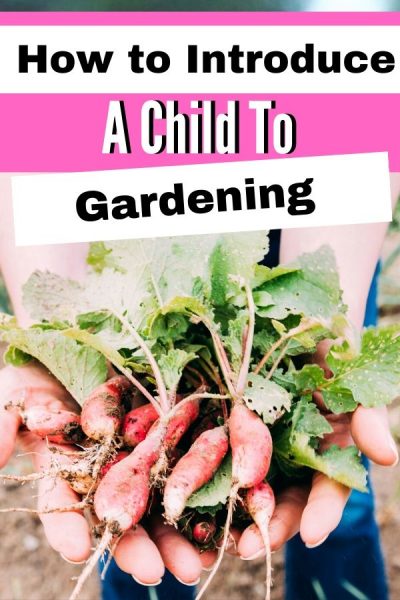Getting Started With Container Gardening With Children
Container gardening is one of the easiest ways to get started when gardening with children. It can also be helpful if you live in an apartment complex or a rental. Both living situations can be a struggle for a homeschool mom trying to bring the outdoors to her home.
A container garden is easily transported from place to place. Unlike plants that have established themselves in the earth. Raising plants in containers is the practical way for an urban gardener or child gardener to maintain a relationship with their plants for years to come. If you’re new to gardening, it may be helpful to read about how to grow any plant from seed.

To Begin Container Gardening One Must Purchase Several Necessary Supplies
Containers
The size of the container that you buy depends largely upon the plant that you are growing. If you are growing flowers you may require a small container. Herbs grow well in small containers as long as they are pruned frequently.
Other plants may require a bigger container. For example, if you are growing a small container garden a storage tote might be a great upcycled option for things like carrots, spinach, lettuce or even cucumbers if you add a trellis.
Since plants grow as much as their containers allow, choosing to plant in a small container will require repotting as your plant outgrows it’s home. This will also free up a small container for a new plant each year. Therefore, you can rotate your plants and containers annually.
Soil
Choose a potting soil that meets the needs of your plants and one that contains perlite. They often make blends, like citrus blend, or garden soil mix so you can get the right nutrients to your plant. If you buy from a landscape company, be sure to buy from a reputable company because it is easy to purchase soil that has not been sterilized; containing larvae of some sort. In that case, you could wind up with insect problems for years to come. Bagged soil can be expensive if planting in a large garden but luckily with containers, you shouldn’t need more than a bag or two.

Drainage
Before you start planting or putting any dirt in your containers you want to make sure that the water can drain from your container. If your container has no holes you will need to drill a few drainage holes into the bottom of the container. This is very important. If the water gathers and lays in the soil you can wind up with root rot.
Feed Your Plants
You can purchase a liquid fertilizer from a reputable business, the fertilizer will feed your plants and keep them alive. Amending the soil with compost as you repot can also provide nutrients to the soil.
Plants
The last item on the agenda are the plants themselves. Before planting you want to learn about what grows in your area. You can do this by finding out what gardening zone you live in- just google “What garden zone is zip code 55555” but of course use your own zip code in the placeholder. There are whole sites dedicated to planting times and tips for specific zones.
Now that all of the necessary materials have been acquired, it is time to begin planting!
Steps For Potting Plants
Step One: Fill the bottom of each pot with about one inch of gravel. Gravel basically just keeps the dirt from washing out the drainage holes. You can use rocks from your yard. You can even use coffee filters or cheesecloth. You just want to keep the soil in the pot.
Step Two: Fill the remainder of the pot with potting soil; leave an inch of space at the top of the container. If you don’t leave space every time you water mud will roll down the sides of your container.
Step Three: Create a small indent in the middle of the pot; this is where the future plant will be placed. Remove your plant from the container it was purchased in and gently break up the root ball. Breaking the root ball encourages the plant to explore its new container and create more roots. Place the plant into the indent that was created earlier.
Step Four: Pack potting soil around the freshly planted plant and firmly press down to crush any air bubbles in the soil. The pot should not be filled to the brim, but it can be filled within a half inch of the top- again mud volcano.
Step Five: Water in the plant by pouring enough water into the container for it to drain out of the holes on the bottom of the container. Be sure to learn how often your plant needs to be watered. Both overwatering and underwatering can cause stress to plants.
Now it’s time to sit back and watch the plants flourish under you and your child’s care. Good luck and enjoy your new container garden. Comment below to let me know what you are planting.

